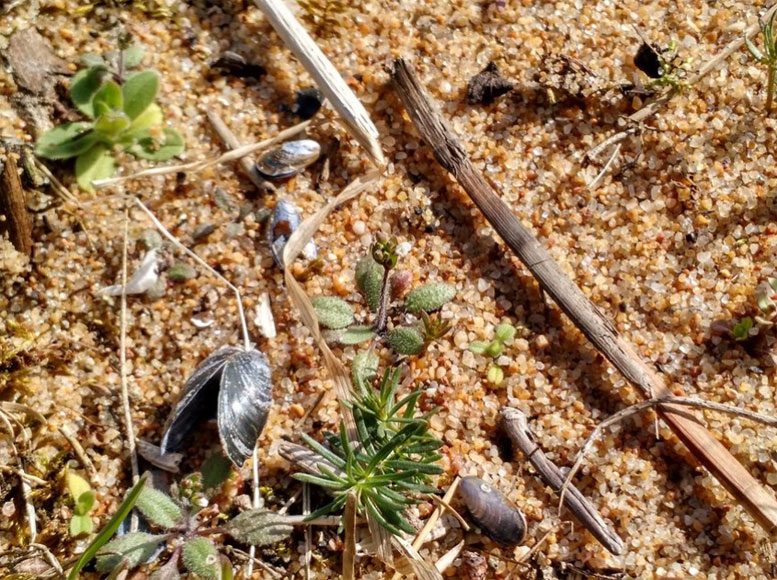
Mustard cress, Arabidopsis thaliana, growing on a sandy beach at the Baltic Sea in southern Sweden. MPI f. Developmental Biology/ M. Exposito-Alonso
In the first study to predict whether different populations of the same plant species can adapt to climate change, scientists from the Max Planck Institute for Developmental Biology find that central European ones die first.
The researchers focused on mustard cress which grows across Europe, Asia, and northwest Africa. Surprisingly, Scandinavian plants can cope with extreme drought as well as those from Mediterranean countries. This could be because the water in the Scandinavian soil is frozen for many months, making it inaccessible to plants and effectively creating drought conditions.
The researchers planted mustard cress seeds collected from over two hundred locations as diverse as North Africa, Spain, central Europe, and northern Sweden. After they had germinated under optimal conditions, the plants were challenged with severe drought, and their ability to survive this stress was recorded. Using large-scale genome sequencing information, specific genetic variants could be linked to the plants’ ability to survive longer. Combined with climate predictions from the Intergovernmental Panel on Climate Change, the team were then able to generate maps showing the location of genetic variants key to the species’ future survival.
“I was shocked to touch the soil in the pots of plants from northern Sweden and Spain, finding it completely dry and brittle, while the plants survived with rich, green leaves,” says lead author Moises Exposito-Alonso from the Max Planck Institute for Developmental Biology. “I traveled to Sweden, where I observed plants surviving in the same way in their natural environment. It reminded me of seeing mustard cress thrive in the broken clay of dried-out river beds where I grew up in Spain. Many botanists and also others think of mustard cress as being the lab rat of plant biologists, but what few realize is that it lives in extreme environments, making it ideal for studying adaptation to climate change,” he says.
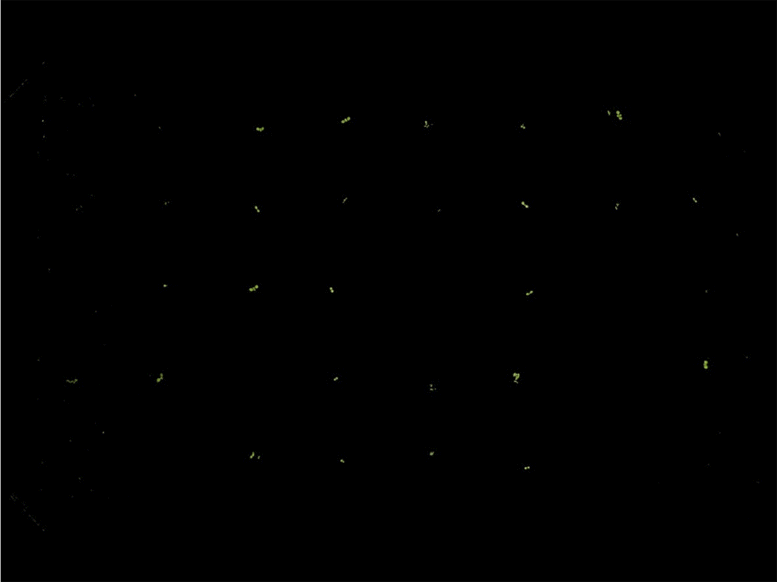
Plant growth and differing rates of death in response to extreme drought. MPI f. Developmental Biology/ M. Exposito-Alonso
Over the next 50 to 100 years, extreme drought events are predicted to become more and more widespread. This is one of the most challenging consequences of global warming for plants and animals. A steady increase in temperatures is already underway, but this and other studies show that reduced rainfall, which will affect plants and humans alike in a less linear way, is likely to have an even greater effect on survival. By 2070, Central Europe is likely to have much less rainfall than today. The new research shows that plants in this region do not have the gene variants needed to adapt.
Previous predictions for the distribution of plants or animals in response to climate change have largely ignored the fact that there is often a tremendous amount of genetic variation in a species. For the first time, scientists have used knowledge about the geographic distribution of genetic variation to map a species’ ability to adapt by natural selection. “Because earth is currently experiencing dramatic climate change, it is of critical interest to understand how species will respond to it,” says Detlef Weigel, who supervised the study with Hernán Burbano. “The chance of a species to withstand global warming will likely to depend on its diversity, especially whether it has already today individuals adapted to extreme conditions,” added Burbano.
The findings reported by the Max Planck Institute can help to rescue plant and animal species with pressing conservation needs. If populations with genetic variants that support drought adaptation can be found, they could be relocated to areas where such adaptations are most needed. Such introduced individuals would then greatly improve the local gene pool. The same approach could be used to reduce a mismatch between crop varieties and their environment, helping to improve the performance of crops.
Publication: “Genomic basis and evolutionary potential for extreme drought adaptation in Arabidopsis thaliana” by Moises Exposito-Alonso, François Vasseur, Wei Ding, George Wang, Hernán A. Burbano and Detlef Weigel, 18 December 2017, Nature Ecology & Evolution.
DOI: 10.1038/s41559-017-0423-0



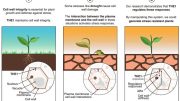



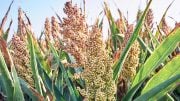
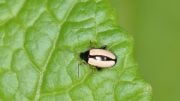
Be the first to comment on "Genetic Variability Supports Plant Survival During Droughts"